Weed infested, steep, long slope -- HELP!
cottagegardenfee
8 years ago
Featured Answer
Comments (34)
Related Discussions
What to do with a steep slope??
Comments (6)18 yrs ago. wow! well, this is my biggest garden inquiry these days. my side yard of full sun has a huge hill and I want to plant a cut flower garden there. it’s covered in brush and weeds. we have been using it to burn brush around the yard so some of the soil in that burn area will probably be great but otherwise our soil is very sandy and just tested an area and slightly acidic. I am not sure about tilling it. I like the idea of cardboard and mulch and covering with a blanket to keep in place (never thought of the ground fabric to be used like that) however does this method mean I cannot plant this season? sad. It will be progress for sure so that’s excellent. curious if I can, cardbaord and add multch and loam (or maybe just loam) with blanket over to allow for a growing season this year. we have some compost we make but it’s a large area like 43’ high and 86’ long. My hope is the cut flowers will help offset these garden-scaping tasks $$. So, curious what you ended up doing and how it went?! thanks all. Any advice would be great. zone 6a so my growing season isn’t long. I would like to start asap but feel stuck on the route to take, please help :)...See MoreNeed help with small backyard facing a steep slope
Comments (12)Hi monkeybolo, I'm outside Boston too and have a back yard similar to yours, as do several other people I know. I know what you mean about there being "hardly any options" for houses--people from other real estate markets have a hard time grasping just how ridiculous it is around here! Just wanted to share my experience. The slope atop my retaining wall has proved very difficult to convert into "garden"--it's just full of roots and weeds and my hours of efforts don't result in significant visual improvement. (My wall is higher than yours, though, and the hill has more trees.) But I have enjoyed treating the lower part of the yard as something like a "great room" with different zones; the walls surrounding it can actually be a positive thing in terms of making it a cozy retreat. It's different from the standard American back yard, more akin to an English garden. Once you decide on the house it may be helpful to consult a landscape architect or someone who can advise you on the deck and hardscaping to get the "bones" of the space in order. Good luck with your purchase!...See MoreWeed barrier for steep slope
Comments (20)Good evening, Nancy. I️ would first recommend trying to reduce the slopes you are dealing with. Consider taking a foot or two off the top of each hill or extending the hills into the lawn areas. Additional pictures from different angles would help me determine how best to accomplish this. I️ would also recommend reducing the planting areas and further reducing the slope with 1-3’ boulders. I️ have used loosely placed boulders with intermingled plantings to retain slopes affectively and beautifully. Next, I️ wonder what style of Gardens and plantings you prefer: naturalist, formal, simple, etc. For low maintenance (I️.e. reduced weeding) you could go either way. I️ would suggest a more naturalist planting scheme, perhaps prairie style using ornamental grasses, thyme, Irish moss, Black-eyed Susan, catmint, lamb’s ear, coneflower, etc.. Each of these plants spreads and/or self-seeds and will fill in, choking out weeds eventually. With a more naturalistic planting scheme, weeds that do pop up are less likely to be noticed and thus less of a nuisance. (Not to say you shouldn’t try to control the weeds.) If you do use shrubs or other non self-seeding plants to fill these areas, you can also use Preen to control weeds. Preen is a pre-emergent weed control that stops seeds from germinating and will not harm existing plants....See MoreHELP! Steep Slope Covered in Weeds - Southern California
Comments (28)I'm not an expert on California plants so I won't comment on choices, but for slopes in general, here are some tips. 1) As others have said, choosing native plants that spread quickly will help hold the soil in place and prevent erosion. 2) Keep general maintenance in mind when choosing plants. With a slope that steep you likely will want minimal maintenance so you don't have to drag your weed wacker, lawn mowers, wheelbarrows up the slope. 3) Low water/drought tolerant plants are not only better to prevent erosion but provides less risk to the integrity of your retaining wall. 4) When you place boulders bury them in 1/3 of their mass to avoid rolls. 5) If you use rock mulch at all, stick to angular rocks ( not river rock or peagravel) to avoid rolling and slumping. 6) Choosing smaller pot sizes for planting is often easier for planting on slopes, since a smaller hole is needed for the root ball. The link below has an example of a planting detail for slopes. Notice how the stem is not covered, and that the downhill side has a bit of a berm built up to provide enough soil cover for that side of the rootball but also to hold and slow water. https://landscapearchitecturemagazine.org/2018/04/24/slope-style/...See Moredocmom_gw
8 years agostonethegardener
8 years agovioletwest
8 years agoZachS. z5 Platteville, Colorado
8 years agoUser
8 years agolast modified: 8 years agoZachS. z5 Platteville, Colorado
8 years agolast modified: 8 years agoUser
8 years agoZachS. z5 Platteville, Colorado
8 years agostonethegardener
8 years agolast modified: 8 years agowisconsitom
8 years agostonethegardener
8 years agowisconsitom
8 years agoUser
8 years agolast modified: 8 years agoZachS. z5 Platteville, Colorado
8 years agostonethegardener
8 years agowisconsitom
8 years agoUser
8 years agolast modified: 8 years agostonethegardener
8 years agolast modified: 8 years agoUser
8 years agolast modified: 8 years agoVicissitudezz
8 years agolast modified: 8 years agostonethegardener
8 years agoUser
8 years agolast modified: 8 years agowisconsitom
8 years agoUser
8 years agolast modified: 8 years agotuben
8 years agodandy_line (Z3b N Cent Mn)
8 years agowisconsitom
8 years agoUser
8 years agolast modified: 8 years agowisconsitom
8 years agowisconsitom
8 years agoUser
8 years agowisconsitom
8 years ago
Related Stories

EDIBLE GARDENSNatural Ways to Get Rid of Weeds in Your Garden
Use these techniques to help prevent the spread of weeds and to learn about your soil
Full Story
HOUZZ TOURSHouzz Tour: From Overgrown Weeds to Picturesque Farmhouse Expanse
This once-neglected 100-acre South Carolina site now features a lake, a wood-filled farmhouse and a far-reaching view
Full Story
LANDSCAPE DESIGNLandscaping Magic Fixes a Dangerous Sloped Yard
It had scary parking, a confusing entry and erosion issues. See how this steep California landscape gained safety, beauty and clarity
Full Story
GARDENING GUIDES5 Ways to Naturally Win the Weed War
Show irksome weeds no mercy with these tricks for combating them sans chemicals
Full Story
GARDENING GUIDESTackle Weeds the Natural Way
Instead of dousing your yard with chemicals to wipe out weeds, let time and nature work their magic via smothering and solarization
Full Story
GARDENING GUIDESGreat Design Plant: Bugle Weed, a Quick Ground Cover
It’s highly adaptable, suppresses weeds, reduces erosion and provide weeks of bright flowers. Just watch for invasiveness
Full Story
LIFE12 House-Hunting Tips to Help You Make the Right Choice
Stay organized and focused on your quest for a new home, to make the search easier and avoid surprises later
Full Story
LANDSCAPE DESIGN11 Design Solutions for Sloping Backyards
Hit the garden slopes running with these bright ideas for terraces, zones, paths and more
Full Story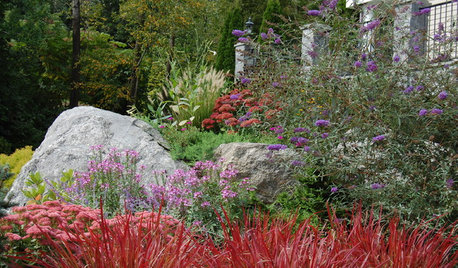
LANDSCAPE DESIGNHow to Design a Great Garden on a Sloped Lot
Get a designer's tips for turning a hillside yard into the beautiful garden you’ve been dreaming of
Full Story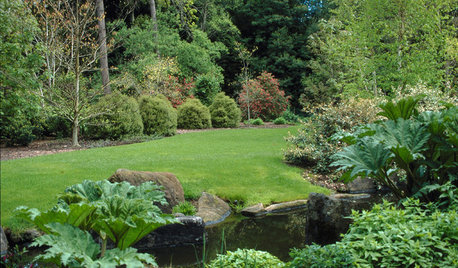
GARDENING GUIDESYou Don't Need Prairie to Help Pollinators
Woodlands, marshes, deserts — pollinators are everywhere
Full Story


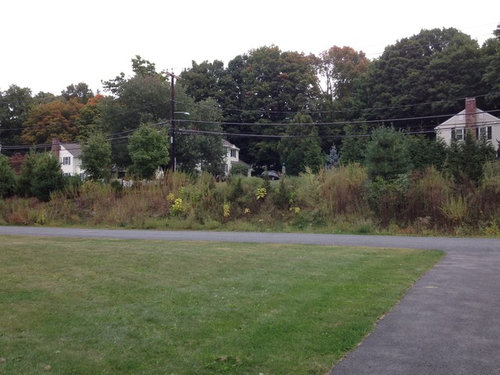


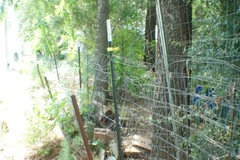
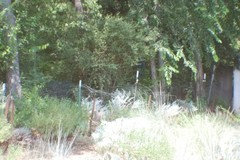


wisconsitom